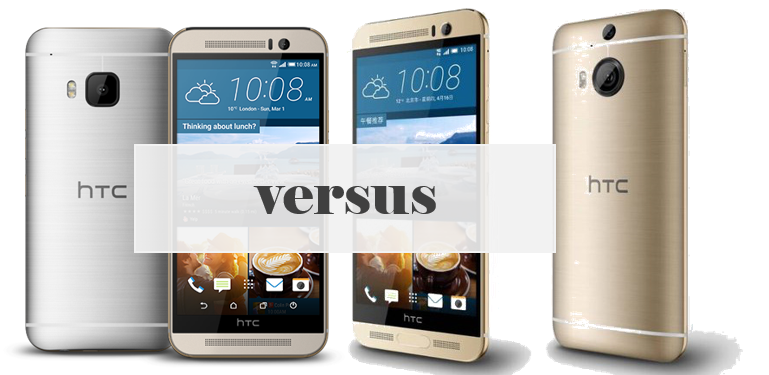HTC One M9+ is now officially launched
in China after numerous amounts of leaks online. By the name itself, the device
seems to be an upgrade of the month-old HTC One M9. At first glance, the “Plus”
handset is better than the existing M9 in several points. If I were a user of
the HTC One M9, what would I feel about the fact that the Taiwanese outfit releases
an upgrade to my existing handset? You will know the answer in our device
comparison right after the fold.
HTC One M9+ versus HTC One M9
The HTC One M9+ is currently exclusive
in the Chinese market. This might also be one of the reasons why the company
still manages to maintain its cool despite the uproar of the existing users of
the HTC One M9. In this “versus” article, we have listed five points of
comparison for both devices.
Related: SamsungGalaxy S6 and Galaxy S6 Edge in 10 Sentences
1. Display
The HTC One M9 retains the form factor
of last year’s flagship, the One M8, in terms of screen real estate. Though,
most of us consider the “Plus” moniker to come with a major leap in the screen
size, the HTC One M9+ only includes a subtle increase – it now frames a
5.2-inch LCD display which is technically bigger than the regular One M9.
However, this new iteration of the
current top-of-the-line handset packs a stunning 2K display. This means that
HTC One M9+ have a better screen resolution with 2560 x 1440 pixels (Quad HD)
compared to the 1980 x 1080 pixels (Full HD) of the HTC One M9. And yes, the M9+'s display is sharper at 565 ppi pixel density compared to One M9’s 441
ppi.
2. Chipset
The company left the Qualcomm
Snapdragon 810 in the cutting room with the new One M9+’s release. The handset
uses a MediaTek MT6795T. It has the same number of cores as the Snapdragon 810
but is clocked faster at 2.2-gigahertz.
Basing on specs alone, we could see
that the HTC One M9+ has an advantage when we talk about performance. Both
handsets are packed with a beefy 3GB of RAM.
3. Camera
While the HTC One M9 scrapped the Duo
Camera feature in exchange of the 20.7-megapixel rear camera module, the One
M9+ revived the Duo Camera with 20-megapixel sensor. Thus, the “Plus” version
offers an aesthetic depth of field or Bokeh effect in camera outputs.
On the front panel, both feature the
4MP Ultrapixel technology that the company has used with One M8’s primary
camera.
4. Fingerprint Sensor and Home Button
The device’s front panel also house
the fingerprint sensor found in the Home Button found in line with the bottom
BoomSound speakers. Like the Samsung Galaxy S6, the fingerprint sensor also
gives you the ease in unlocking your device. Plus, HTC has partnered with
AliPay for the device’s mobile payment functionality.
5. Dimensions
The HTC One M9+ almost has the same
dimensions as the One M9. Though we could tell the former is larger, its depth
still remains at 9.6 millimeters like the One M9.
Conclusion
So, is the HTC One M9+ better than the
HTC One M9? The answer is a plain yes, but not by a leapfrog. This handset
might only be for the Chinese market wherein you need to step up every single
bit of features to compete with smaller Chinese companies offering power-packed
hardware. The Quad HD resolution, bump in speed, camera and display size are
just reflexes of any other bigger player in the market.
If ever the handset will be released
outside of China, existing owners of HTC One M9 could just let this offering
pass; while those in the market for an Android powerhouse shouldn’t miss this.
One M9 is still, by far, one of the best Android handsets around.

